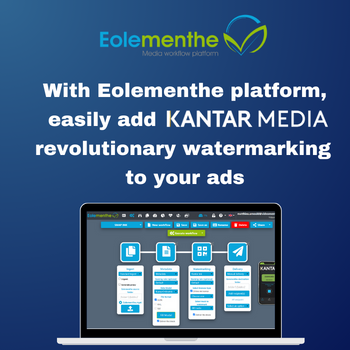IBC 2025 | Meet us in Amsterdam from 12 to15 september 2025

Subtitling Best Practices
for Social Networks:
Enhancing Accessibility and Visibility
18 december 2023
In the rapidly evolving landscape of social media, where visual content reigns supreme, subtitling has emerged as a critical tool for expanding audience reach and ensuring inclusivity. Whether you’re crafting content for Instagram, TikTok, Facebook, Twitter, or LinkedIn, adhering to best practices in subtitling is essential for effective communication. Let’s delve into the nuances of subtitling across these platforms, exploring the significance of positioning, font choice, current trends, and the potential drawbacks for those with hearing or visual impairments.
The basic rules of subtitling
Before you start subtitling your videos, it’s important to know the basic rules that guarantee the quality and legibility of your subtitles. Here are the main ones:
- Transcribe the audio content faithfully: subtitles must reflect the message and tone of the video as faithfully as possible, without distorting or over-summarising the original message. Punctuation, capitalisation, accents and spelling rules must also be respected.
- Adapt the length of the subtitles: subtitles should be short and concise, so as not to overload the screen and make them easy to read. It is recommended not to exceed two lines per subtitle, and to limit the number of characters to around 70 per 2 lines, according to the video format.
- Synchronise subtitles with the audio: subtitles should appear and disappear at the same time as the words or sounds they translate, to avoid lag and confusion. It is also important to respect the reading time of the subtitles, which must be sufficient for the viewer to read them without rushing. It is advisable to leave a subtitle on the screen for at least 1.5 seconds, and not more than 6 seconds.
- Choose a clear, legible font: subtitles must be easy to read on all devices, without encroaching on the video. So choose a simple, no-frills font, preferably sans-serif (such as Arial or Verdana), in a colour that contrasts with the background (white on black, or black on white). You can also add an outline or plain background to subtitles to make them more visible.
- Position subtitles wisely: subtitles must be positioned so as not to interfere with the understanding of the video, or mask important elements (faces, text, logos, etc.). You should therefore avoid sticking them to the edges of the screen, or superimposing them over other subtitles or graphic overlays. It is generally advisable to place subtitles at the bottom of the screen, in the centre or slightly to the left or right, depending on the context.
SED UT TUM
New potential advertising revenue for television?
Les Echos revealed that the Boston Consulting Group study's, commissioned by SNPTV, sheds light on the potential for television to capture approximately €150 million in advertising investments from retailers.
This opportunity arises as the end of advertising leaflets is just around the corner. On 12 December 2022, Michel-Edouard Leclerc announced that the distribution of advertising leaflets would cease throughout France from September 2023. The Casino group no longer distribute leaflets from 2019. Cora supermarkets stopped doing so on 10 January 2019 . And Carrefour plans to go digital from 2024.
The budget previously allocated to such promotional materials could be redirected to various media channels. At E. Leclerc for example, most communication will now take place on the internet.
For the television industry, this could signify a substantial boost in revenue, which has seen a 7.7% decrease in advertising income during the first half of 2023, as reported by Bump, an advertising analytics firm.
The Digital: Winner of this New Game
According to the study's insights, if the existing rules remain unchanged, digital platforms could benefit the most from the reallocation of advertising investments . The radio sector might face challenges in accommodating the additional ad spend, potentially leading to market saturation. Additionally, print media may not possess the required audience reach to replace the traditional printed flyers, as indicated by the Boston Consulting Group.
The study's analysts believe that if advertising regulations were revised, television could capture its "fair share" of sector growth, without detriment to radio or print media. These other mediums are also expected to grow in the coming years, with projections extending to 2027.
However, it's important to note that the potential reconsideration of advertising restrictions has already met with opposition from players in the print media and radio sectors. Despite this opposition, the findings of the study indicate a compelling opportunity for television to thrive in the advertising landscape, potentially rejuvenating the industry's revenue stream and making it an attractive option for brands seeking to advertise to a broader audience.
Make the Most of Ads on TV: two Things to Bear in Mind
1. Get accurate audience measurement
In this evolving media landscape, accurate audience measurement will be crucial for brands and advertisers looking to capitalize on the television platform.
The ability to precisely gauge the viewership and engagement of their advertisements on each distribution channel will be paramount in making informed decisions about where to allocate their advertising budgets effectively.
Videomenthe can help agencies and brands, by providing an easy way to apply the Kantar Media watermarking and therefore get accurate audience measurement per content and per distribution channel (television, digital, radio or else).
2. Promoting Accessibility of Advertising Spots for All
2. Promoting Accessibility of Advertising Spots for All
Another challenge will be the accessibility of TV spots.
While the majority of TV programmes are accessible via subtitles, and increasingly via audio description, accessible advertising spots are largely in the minority. In France in 2022, it is estimated that only 9% of advertising films were subtitled, according to data from Adstream and Peach (source: Strategies).
The AACC and the Union des marques are working on the accessibility of TV commercials with the support of the SNPTV, the ARPP and the Udecam. M6 Publicité recently announced an initiative to drive change by launching a subtitling service for commercials broadcast on linear TV (source: M6 Pub).
Videomenthe already works with broadcasters on subtitling projects, in order to comply with legal requirements in this area, but also to ensure that content is accessible to as many people as possible.
Eolementhe subtitling platform combined to experiences professional translators are a good opportunity to easily add SDH subtitling to ads. and reach the forgotten audience of death and hard of hearing people.
Conclusion
In conclusion, as the traditional printed flyers phase out, television appears to be on the cusp of a golden opportunity to secure a significant share of advertising investments. This transformation in the advertising landscape, if embraced and supported by regulatory changes, could not only boost the television industry but also provide a new and effective avenue for brands to connect with their target audiences.
Nevertheless, the need for inclusive content ant accurate audience measurement remains essential to ensure brands get the most out of their advertising campaigns in this changing media landscape.
Discover how Eolementhe platform can help brands and advertisers getting the best of their ads

